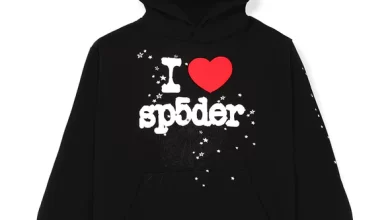When your favorite garment gets damaged, whether by a moth hole, a tear, or general wear and tear, it can feel like the end of its lifespan. But before you consider discarding it, there’s a solution that combines craftsmanship and precision: reweaving services. Reweaving is a specialized repair technique that restores damaged fabrics to their original state, often making the repair nearly invisible.
This article delves into everything you need to know about reweaving services, from what it is and how it works to why it’s worth considering and how to choose the right service for your needs.
What Is Reweaving?
Reweaving is a meticulous repair method used to mend holes, tears, or other damage in fabric by re-creating the original weave. It involves using threads from the garment itself (or a matching fabric) to seamlessly integrate new threads into the damaged area. Unlike patching or sewing, reweaving aims to make the repair invisible, preserving the garment’s aesthetic and structural integrity.
Reweaving is most commonly used for high-quality fabrics like wool, cashmere, silk, and fine suiting materials. It is ideal for repairing garments with sentimental value, such as heirlooms, or expensive items like designer suits, dresses, and coats.
Types of Reweaving Techniques
Reweaving services employ various techniques depending on the type of fabric and the extent of the damage. Here are the most common methods:
- French Reweaving (Invisible Weaving):
- This technique involves weaving individual threads into the damaged area to replicate the original fabric pattern. It is highly detailed and labor-intensive but produces the most seamless results.
- Best for: Small holes, tears, and fine fabrics like cashmere and silk.
- Overweaving:
- Overweaving uses a patch cut from the same fabric to cover the damaged area. The patch is then woven into the surrounding fabric for a blended look.
- Best for: Larger holes or tears where the original weave is challenging to replicate.
- In-Weaving:
- This method pulls threads from an inconspicuous part of the garment (e.g., a seam or hem) to weave them into the damaged area. It ensures a perfect color and texture match.
- Best for: Repairs on garments where matching fabric isn’t available.
- Darning:
- Darning involves interweaving new threads to fill in the damaged area. While it may be more noticeable than French reweaving, it is still an effective repair option for less delicate fabrics.
- Best for: Sweaters, knits, and casual garments.
Why Choose a Reweaving Service?
Reweaving services offer numerous benefits that make them worth considering, especially for valuable or sentimental garments.
- Preservation of Sentimental Value: Garments with emotional significance, like a family heirloom or a wedding outfit, deserve special care. Reweaving ensures they remain wearable for years to come.
- Sustainability: Choosing reweaving over replacement supports sustainable fashion practices by reducing textile waste and extending the lifespan of your clothing.
- Cost-Effective Solution: While reweaving services can be pricey, they are often more affordable than replacing a high-quality garment.
- Invisible Repairs: The hallmark of reweaving is its near-invisible results. This makes it ideal for formal or professional attire, where visible repairs would be unacceptable.
- Custom Solutions: Professional reweaving services can handle unique challenges, such as matching intricate patterns or working with delicate materials.
Common Garments for Reweaving
Reweaving is suitable for a variety of clothing items and fabrics. Some of the most common garments repaired by reweaving services include:
- Suits and Blazers: Tears or holes in wool or cashmere suits can be expertly repaired, maintaining their polished appearance.
- Coats and Jackets: Winter coats, particularly those made of high-end materials like alpaca or cashmere, benefit greatly from reweaving.
- Sweaters and Knits: Small holes caused by moths or wear can be invisibly repaired, restoring your favorite sweater to its original form.
- Dresses and Gowns: Formal wear, including evening gowns and cocktail dresses, often requires reweaving for delicate fabrics like silk.
- Trousers and Skirts: High-quality trousers or skirts made from wool or other fine materials can be seamlessly repaired.
How to Choose the Right Reweaving Service
Finding the right reweaving service ensures that your garment is in skilled hands. Here are some factors to consider when choosing a reweaving professional:
- Experience and Expertise: Look for services with a proven track record and expertise in handling the type of fabric or garment you need repaired.
- Customer Reviews: Check online reviews and testimonials to gauge the quality of the service. A high customer satisfaction rate is a good indicator of reliability.
- Portfolio: Many reweaving professionals showcase their work through before-and-after photos. Reviewing these examples can give you confidence in their craftsmanship.
- Turnaround Time: Inquire about the expected timeline for repairs. Some reweaving services may take weeks to complete intricate repairs, so plan accordingly.
- Pricing: Reweaving is a specialized service, and prices can vary. While it may be tempting to choose the cheapest option, prioritize quality over cost to ensure the best results.
- Eco-Friendly Practices: If sustainability is important to you, ask if the service uses environmentally friendly methods or materials.
While these prices may seem high, the investment is often worthwhile for preserving valuable garments.
How to Prepare Your Garment for Reweaving
To ensure the best results, follow these steps before sending your garment for reweaving:
- Clean the Garment: Have the garment professionally cleaned before repair to remove any dirt, oils, or stains that could interfere with the repair process.
- Inspect the Damage: Identify all areas that need repair and take note of any additional concerns, such as loose seams or frayed edges.
- Provide Background Information: Share details about the fabric, its origin, or any specific requests with the repair service.
- Package Carefully: If shipping the garment, use a protective bag or box to prevent further damage during transit.
The Importance of Reweaving in Sustainable Fashion
Reweaving services play a vital role in the movement toward sustainable fashion. As consumers become more aware of the environmental impact of textile waste, repair and restoration services like reweaving offer a practical solution to extend the life of garments. By choosing reweaving, you’re contributing to a circular economy that values quality over disposability.
Conclusion
Reweaving is a specialized art that restores damaged garments to their original glory. Whether it’s a treasured heirloom, a luxurious cashmere coat, or a tailored suit, reweaving services provide a sustainable, cost-effective, and aesthetically pleasing solution to fabric damage.
With skilled craftsmanship and meticulous attention to detail, reweaving ensures that your favorite garments remain part of your wardrobe for years to come. So the next time you spot a hole or tear in your clothing, consider investing in a reweaving service—because every garment deserves a second chance.




